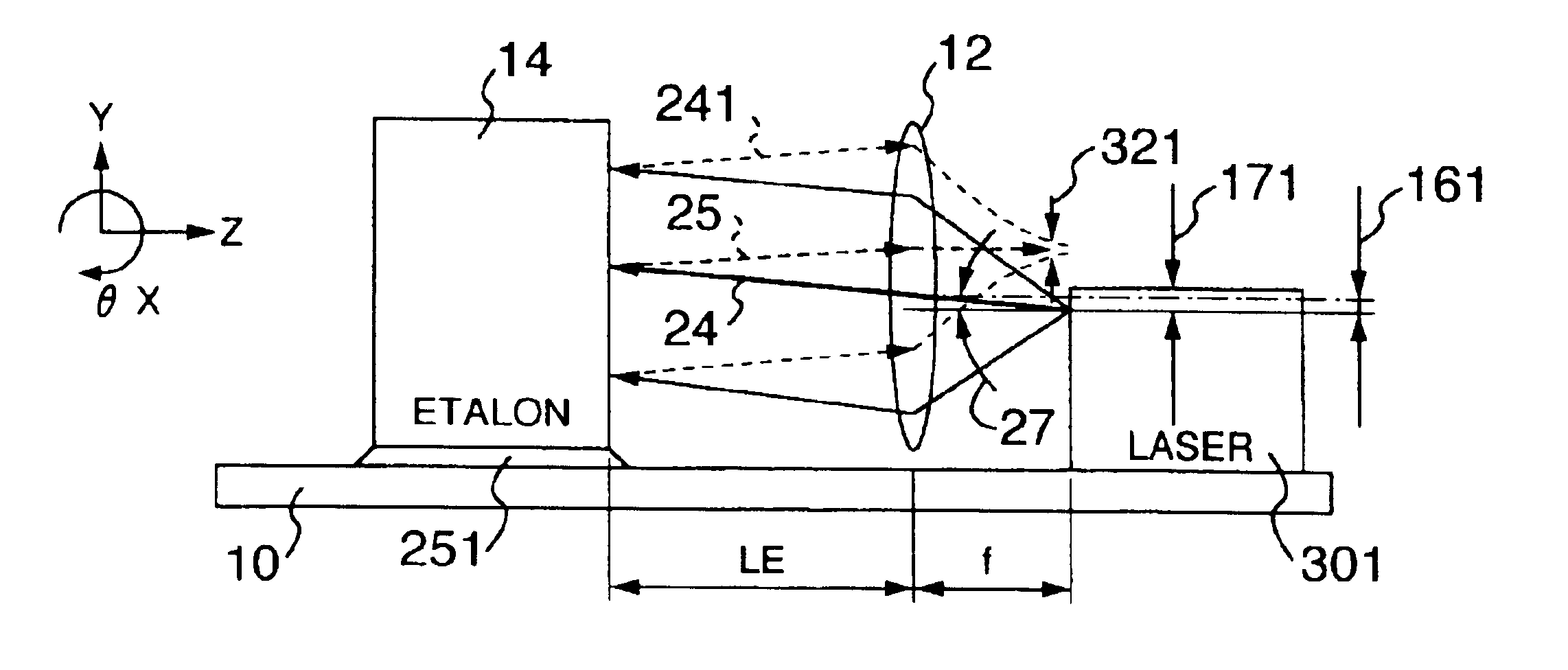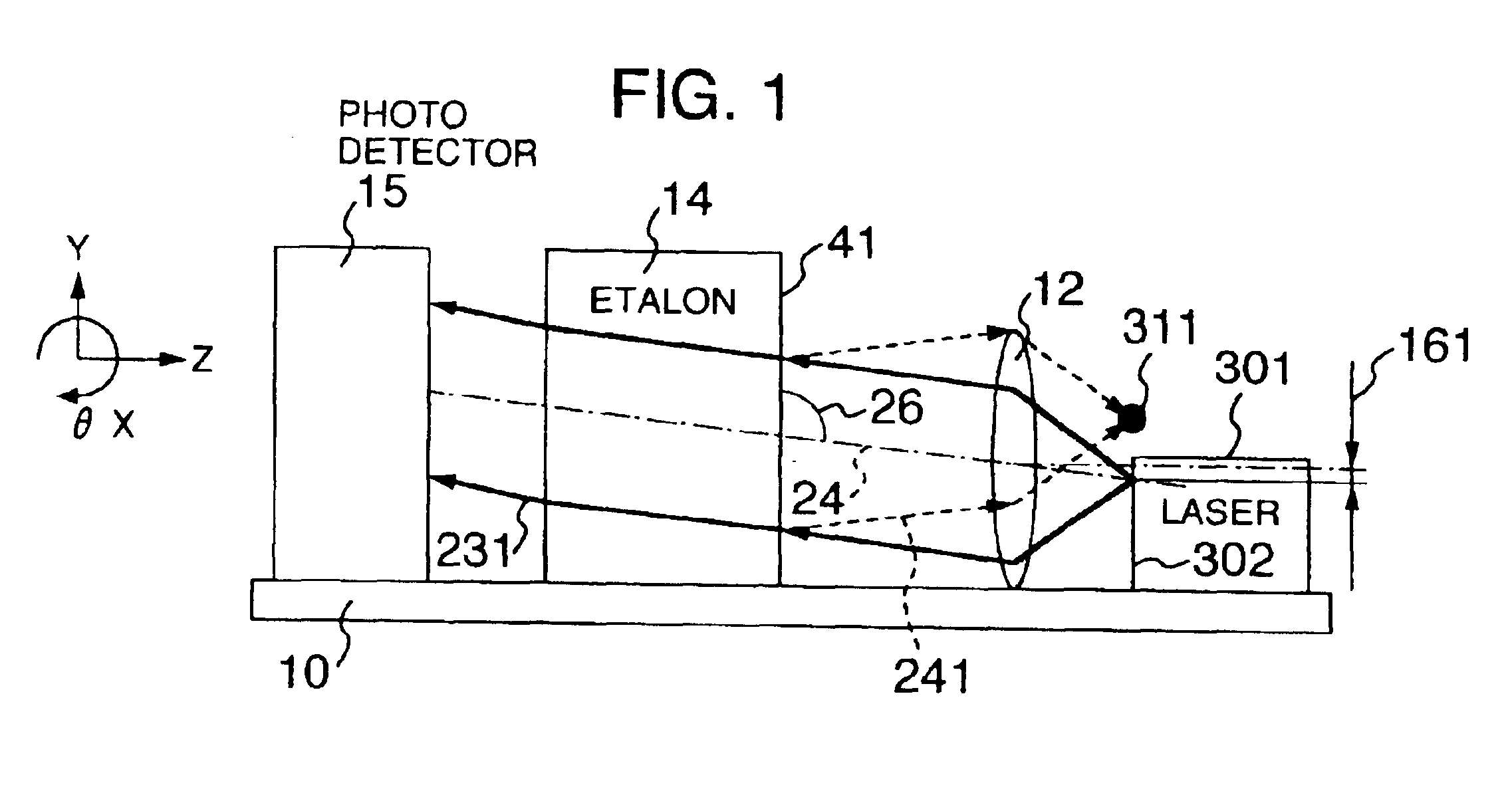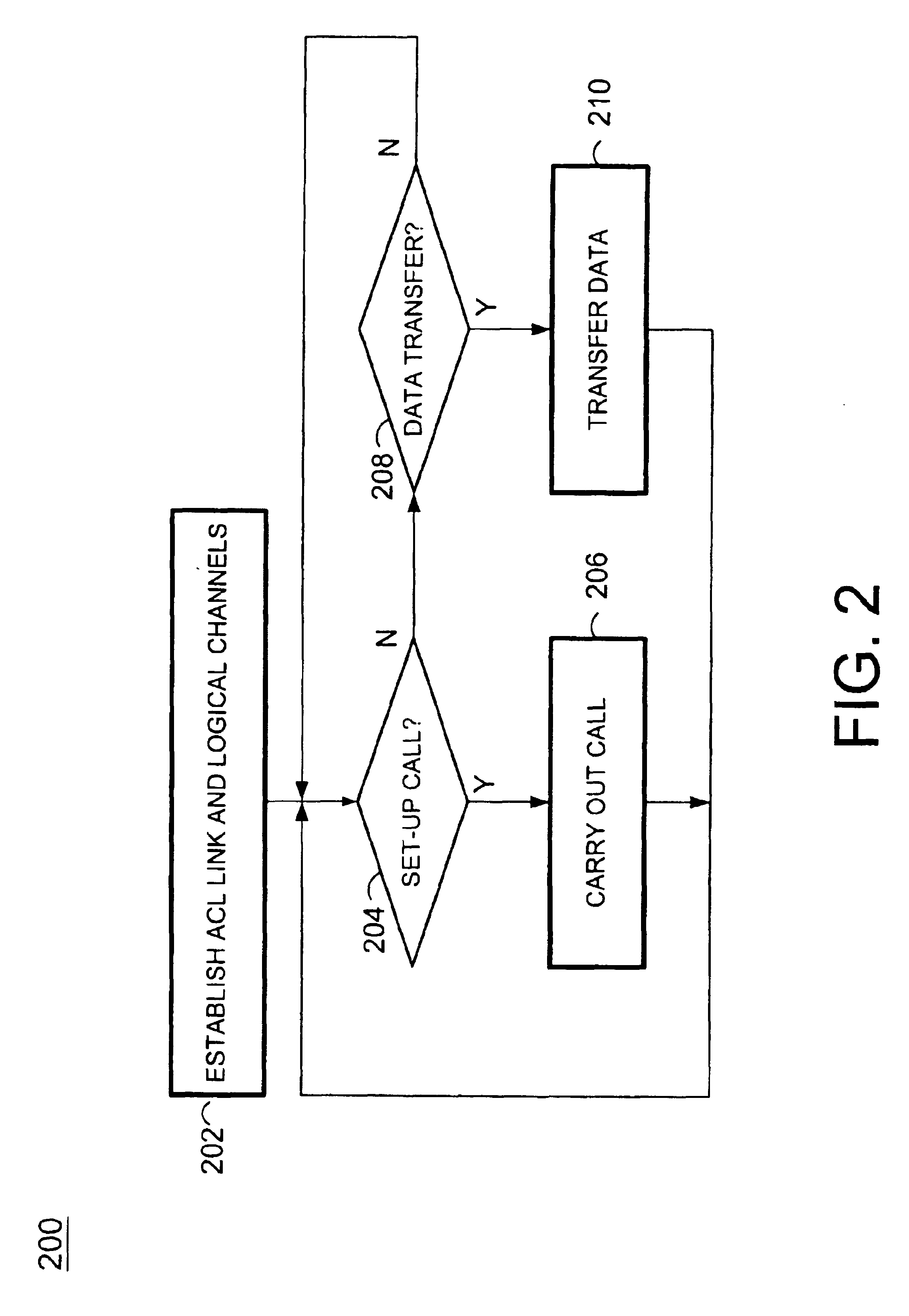Optical module which permits stable laser output
a technology of optical modules and laser output, applied in the field of optical modules, can solve the problems of unstable wavelength detection signals, unstable laser oscillation, and large number of components to be prepared, and achieve the effect of stable laser output and reducing the instability of oscillation
- Summary
- Abstract
- Description
- Claims
- Application Information
AI Technical Summary
Benefits of technology
Problems solved by technology
Method used
Image
Examples
Embodiment Construction
[0036]Referring now to the accompanying drawings, a description will be given of an embodiment of the invention. First, a description will be given of the configuration and operation of the overall optical module using an etalon.
[0037]FIG. 2 is a plan view illustrating the overall configuration of the optical module. The light emitted forwardly by a semiconductor laser 11 is converted into a forward beam 71 parallel to a beam center axis 23 by a front lens 17, and after being transmitted through an unillustrated isolator, the forward beam 71 is focused by a front lens 18 and is made incident upon a fiber at the center of an end face of an optical fiber ferrule 19 so as to be used for communication. To stabilize the quantity and wavelength of this light, a wavelength-monitoring optical system is added in the rear of the semiconductor laser 11.
[0038]In the Figures that follow, the illustration of the front optical system (the arrangement located on the optical fiber ferrule 19 side wi...
PUM
 Login to View More
Login to View More Abstract
Description
Claims
Application Information
 Login to View More
Login to View More - R&D
- Intellectual Property
- Life Sciences
- Materials
- Tech Scout
- Unparalleled Data Quality
- Higher Quality Content
- 60% Fewer Hallucinations
Browse by: Latest US Patents, China's latest patents, Technical Efficacy Thesaurus, Application Domain, Technology Topic, Popular Technical Reports.
© 2025 PatSnap. All rights reserved.Legal|Privacy policy|Modern Slavery Act Transparency Statement|Sitemap|About US| Contact US: help@patsnap.com



